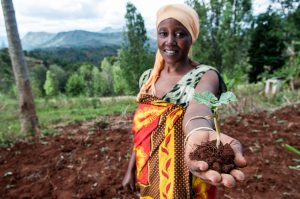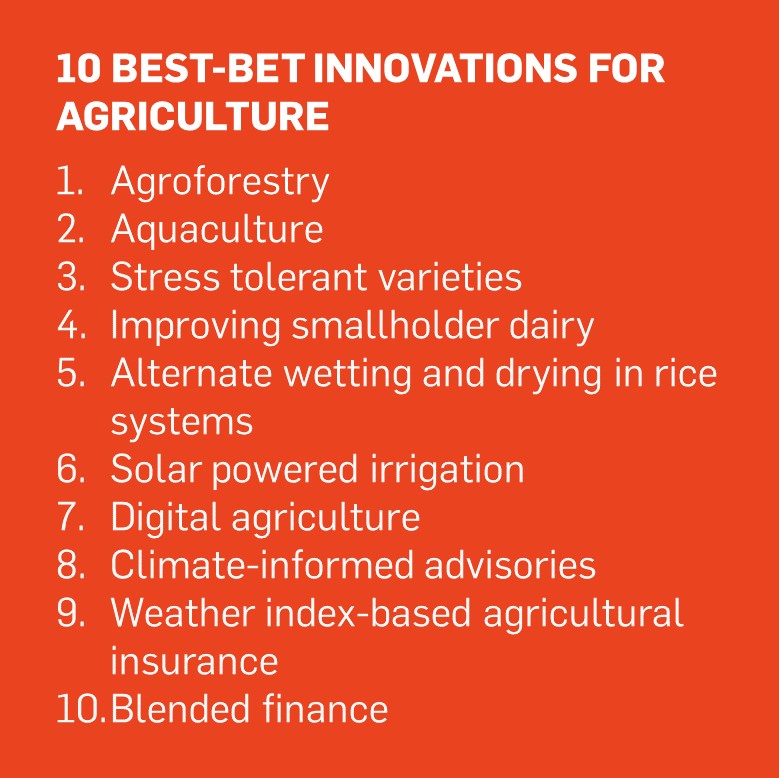This blog was originally published on CCAFS’s website.

A degree of future climate change is inevitable, making adaptation measures indispensable. However, as many countries already face the challenges of poverty, hunger, gender inequality and unemployment, it is important to align adaptation and development efforts. To support this alignment, the Parties to the United Nations Framework Convention on Climate Change (UNFCCC) developed the National Adaptation Plan (NAP) process, which helps developing countries integrate adaptation measures into their national decision-making.
Adaptation measures in agriculture in particular offer co-benefits for poverty alleviation, social inclusion, employment and economic activity, as the sector provides a livelihood to a substantial portion of the population in many developing countries. To illustrate the benefits that adaptation measures in agriculture can have, the CGIAR Research Program on Climate Change, Agriculture and Food Security (CCAFS) compiled 10 best-bet innovations in a working paper. The paper can be used as a supplement to the technical guidelines of the NAP. Below, we explore some of those innovations and their value as adaptation measures for National Adaptation Plans.
Food security through resilient production
 Research indicates that many adaptation measures aimed at increasing the resilience of crops or animals to rising temperatures, water levels, salinity intrusion or droughts can enhance productivity levels. One example is the introduction of stress-tolerant crop varieties. Studies show that drought-tolerant maize varieties released in Africa yield 20% more than commercial varieties in low-yielding environments, and up to 40% more under drought conditions. CGIAR scientists have developed stress-tolerant varieties of beans, maize, potato, rice, sweet potato and wheat, with high potential for further release and breeding.
Research indicates that many adaptation measures aimed at increasing the resilience of crops or animals to rising temperatures, water levels, salinity intrusion or droughts can enhance productivity levels. One example is the introduction of stress-tolerant crop varieties. Studies show that drought-tolerant maize varieties released in Africa yield 20% more than commercial varieties in low-yielding environments, and up to 40% more under drought conditions. CGIAR scientists have developed stress-tolerant varieties of beans, maize, potato, rice, sweet potato and wheat, with high potential for further release and breeding.
The demand for dairy and meat is increasing throughout the developing world, but smallholder dairy production is threatened by shortages of forage and animal heat stress in many regions. In East Asia, over 300,000 smallholder families have joined a program that helped them to introduce climate-smart agriculture practices, increasing production and decreasing greenhouse gas emission intensity.
Another example of adaptation measures increasing production is the deployment of solar irrigation. It is widely recognized that the provision of irrigation can help millions of smallholder farmers cope with climate-induced uncertainties. Research by the International Water Management Institute (IWMI) in India shows that equipping enterprising young women and men with 5-6 kWp solar pumps in overlapping command areas is an effective way to catalyse competitive and equitable irrigation service markets.
The application of alternate wetting and drying in rice paddies is another example of a multi-purpose adaptation technique. While the technique was originally aimed at reducing methane emissions, it reduces irrigation water up to 30%.
The National Adaptation Plan of Sri Lanka provides a good example of how such measures can contribute to development. Sri Lanka used the Sustainable Development Goals as a reference for its NAP and ended up drawing heavily on measures like improved varieties and breeds, and irrigation systems.
Improved livelihoods through resilient farming systems
Besides supporting food security by strengthening the resilience of farming systems, adaptation measures in agriculture can also enhance the livelihoods of farmers. Agroforestry, an adaptation measure that increases soil water retention and creates suitable micro-climates for crops, provides one example. Not only does it enhance the resilience of farming systems in the context of climate shocks, but it can also provide farmers with products such as timber or fruits to diversify their income and nutrition. For instance, the World Agroforestry Center (ICRAF) found that intercropping maize with certain trees in Vietnam could generate additional annual income of USD 2000–3500 per hectare per year for farmers.
Another adaptation measure which can add to the resilience of farmers’ livelihoods is aquaculture. The farming of fish or other aquatic animals provides an additional source of nutrition, and importantly, it provides an alternative source of income in cases of crop failure.
In addition to field-level practices, services can also be important. The provision of weather index-based insurance, which triggers pay-outs to farmers when rainfall, or another proxy of production, falls below a pre-specified regional threshold, is one example. It allows farmers to safeguard their capital and income in cases of extreme weather events. Weather index-based insurance schemes have a prominent place in Kenya’s National Adaptation Plan, as the government aims to extend such schemes to 80,000 pastoralists by 2019.
Attracting investments through resilient agricultural systems

Several adaptation measures in agriculture can strengthen the resilience of agricultural systems as a whole, making it more attractive for farmers and institutions to invest. For example, digital agriculture can increase precision, productivity, and profitability for farmers through the use of interactive technology and data analytics. Similarly, climate-informed advisories can reduce uncertainties and the risk of investments, and increase returns by improving decision-making.
Another measure to attract climate finance is developing the capacity of domestic financial institutions and providing support for blended finance. This improves governments’ ability to persuade private parties to invest in adaptation measures, so that these can reach scale rapidly. A good example of this can be found in Chile’s National Adaptation Plan, in which the government included a program to loan over USD 80 million per year to farmers who wish to incorporate adaptation measures.
Decision support for National Adaptation Plans
To choose the right adaptation measures in agriculture from the palette of options, CCAFS and the International Center for Tropical Agriculture (CIAT) have developed an evidenced-based framework for prioritizing investment in climate-smart agriculture. The framework leads policy-makers and project managers through the assessment of possible climate-smart agriculture practices, identification of best options, calculation of costs and benefits, and development of a portfolio. With these innovations and tools, countries can optimize the effectiveness and benefits of their NAPs.
Any opinions stated in this blog post are those of the author and do not necessarily reflect the policies or opinions of the NAP Global Network, its funders, or Network participants.
Read more from the NAP Global Network on sector integration of adaptation considerations.
Interested in joining the Network as a participant? Sign up here.